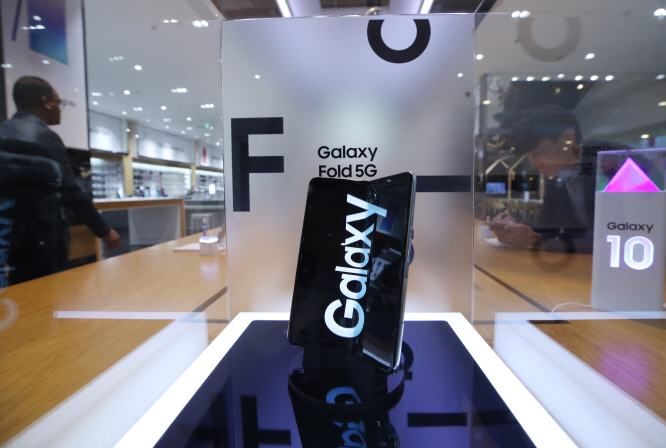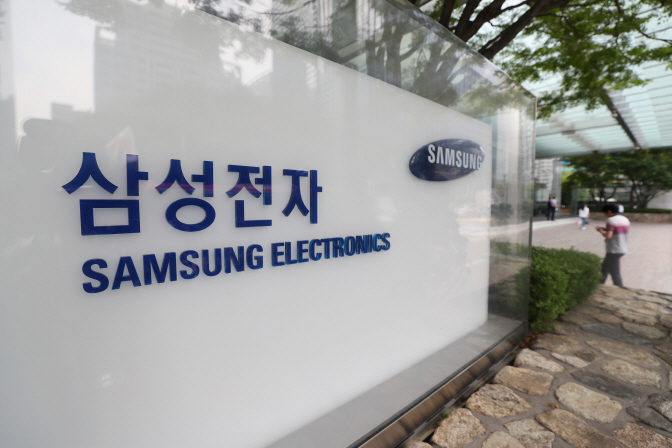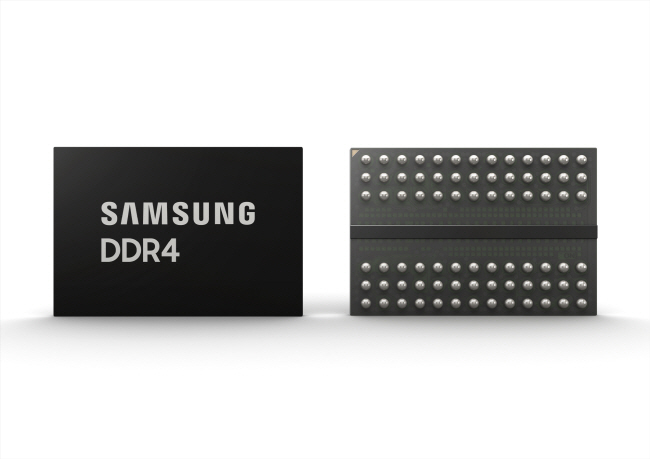SEOUL, Jan. 30 (Korea Bizwire) — Samsung Electronics Co. said Thursday it is expecting a gradual recovery in memory chip demand and shipments of smartphones this year after delivering a 38 percent drop in its fourth-quarter earnings, aided by improving demand from data centers and smartphone makers, and releases of the latest premium gadgets.
Samsung, the world’s leading memory chip and smartphone manufacturer, posted a net income of 5.23 trillion won (US$4.4 billion) in the October-December period, compared with a profit of 8.46 trillion won a year earlier, due to a slump in the memory chip sector.
Its fourth-quarter operating profit slid 33.7 percent on-year to 7.16 trillion won in the fourth quarter, but sales rose 1.05 percent to 59.88 trillion won over the cited period.
The figures were in line with the earnings guidance announced earlier this month.
The tech giant cautiously painted a rosy picture for its chipmaking business this year with a recovery in memory chip demand.
In a conference call, Samsung expected bit growth of more than 10 percent for DRAM and above 20 percent for NAND flash.
Bit growth refers to the amount of memory produced and is considered a key barometer for gauging market demand.
“In 2020 on a whole, server demand for DRAM is seen as solid on the back of increased investments by data centers,” the company said.
“For mobile, the pace of 5G expansion and its effects should be monitored closely, but the company sees demand picking up around mass-market models as major manufacturers expand their 5G smartphone lineups.”
Samsung also expected double-digit revenue growth in its foundry business on mass production of 8-nanometer computing chips and demand for 5G-related chips.
Revenue from the semiconductor division stood at 16.79 trillion won in the last three months of 2019, a 10.4 percent decline from a year earlier.
Its operating profit from the semiconductor business was 3.45 trillion won, down 55 percent over the cited period.
“The memory business reported an on-year decline in profit as DRAM prices continued their downward trend despite rising shipments,” Samsung said.
But its logic chip business posted a rise in profit due to increasing demand for high-resolution image sensors and high performance computer chips, it said.
Analysts here predicted that Samsung’s chip business will see improved earnings from the second quarter as prices of memory chips have been going up in recent weeks.
“It’s likely that DRAM and NAND flash inventories would go down with supply shortages,” said Kim Dong-won, an analyst at KB Securities Co.
“The operating profit of Samsung’s semiconductor business is expected to post near 5 trillion won from the second quarter.”
To further drive growth this year, Samsung said it will focus on transitioning to the next-generation chip production, such as the 1Z-nm DRAM process and the 6th-generation V-NAND.
For its foundry business, Samsung said it aims to complete the product design for the 4nm process and a number of 5nm-based product designs so that it can diversify its customer base.
For 2019, Samsung posted a net income of 21.74 trillion won, down 51 percent from a year ago, as a slowdown in the global economy, sparked by the U.S.-China trade war, ended a two-year boom in the memory chip market, where the company earns the majority of its entire profit.
Samsung’s operating profit in 2019 stood at 27.76 trillion won, marking a 52.8 percent on-year drop and the lowest since 2015, when the comparable figure was 26.4 trillion won.
Its revenue reached 230.4 trillion won last year, a 5.5 percent fall from 2018, and the lowest since 2016, when the company logged 201.8 trillion won.
Samsung’s IT & Mobile Communications (IM) division was one of bright spots last year offsetting the decline in overall earnings.
The mobile business posted sales of 24.95 trillion won in the fourth quarter, up 7 percent from a year earlier, while operating profit jumped 67 percent on-year to 2.52 trillion won.
Samsung said it sold 75 million mobile phones and 7 million tablets in the fourth quarter, with the average selling price of its smartphones reaching $216.
“Quarterly earnings improved significantly thanks to solid sales of flagship Galaxy smartphones and lineup changes to improve profitability for mass-market models,” Samsung said.
“Profit fell from the previous quarter, however, due to the fading effect from a new flagship product launch.”
In 2019, Samsung was the world’s top smartphone vendor with a 20.9 percent global market share after shipping 295.1 million units, according to data from market research firm Strategy Analytics, edging Huawei Technologies Co. with 17 percent and Apple Inc. with 14 percent.

A Galaxy Fold foldable smartphone made by Samsung Electronics Co. is on display at a Samsung store in Seoul. (Yonhap)
Samsung is scheduled to unveil its latest version of the flagship Galaxy S smartphone and new foldable phone next month to fend off challenges against its global rivals.
Samsung said it expects smartphone revenue to rise as new handsets are to be launched in the market, but operating profit is likely to remain flat due to higher marketing expenses.
In the fourth quarter, Samsung’s display panel business also posted a poor result.
It saw 8.05 trillion won in sales, down 12 percent from a year earlier, while operating profit plunged 77 percent on-year to 220 billion won in the October-December period.
“The mobile display division saw profit decline because of a higher cost burden caused by lower fab utilization amid weaker demand for some premium products,” the company said.
“Large displays suffered a bigger loss from a continued decline in LCD panel prices.”
Samsung said its display business, which mainly produces OLED screens, is forecast to grow in 2020 due to a rise of 5G smartphones, but large displays will continue to stay weak as an oversupply issue persists.
Samsung added it is working to convert its LCD line to make its next-generation display, known as QD-Display, with an initial production aimed at 30,000 panels per month.
Samsung’s Consumer Electronics (CE) business division also reported an increase in fourth-quarter earnings, with sales rising 7.8 percent on-year to 12.71 trillion won and operating profit soaring 19.1 percent on-year to 810 billion won, thanks to solid sales of its premium TVs.
“QLED TV sales in the fourth quarter were more than twice the amount sold in the same period a year ago,” the company added.
To further expand its presence in the premium TV market, Samsung said it plans to launch home theater Micro LED TVs in the second half of the year.
Last year, Samsung’s capital expenditures reached 26.9 trillion won, down from 29.4 trillion won from a year ago. More than 80 percent of its capital expenditures were spent on semiconductors.
Samsung didn’t specify its capital expenditure plan for this year but noted it will be “flexible” to meet changing demand from markets.
Samsung said it plans to expand its 5G product portfolio in the mobile business, while its CE business seeks to expand its premium lineup and more B2B opportunities.
Shares in Samsung Electronics closed at 57,200 won on the Seoul bourse, down 3.21 percent from the previous session. The earnings report was released before the market opened.
(Yonhap)








